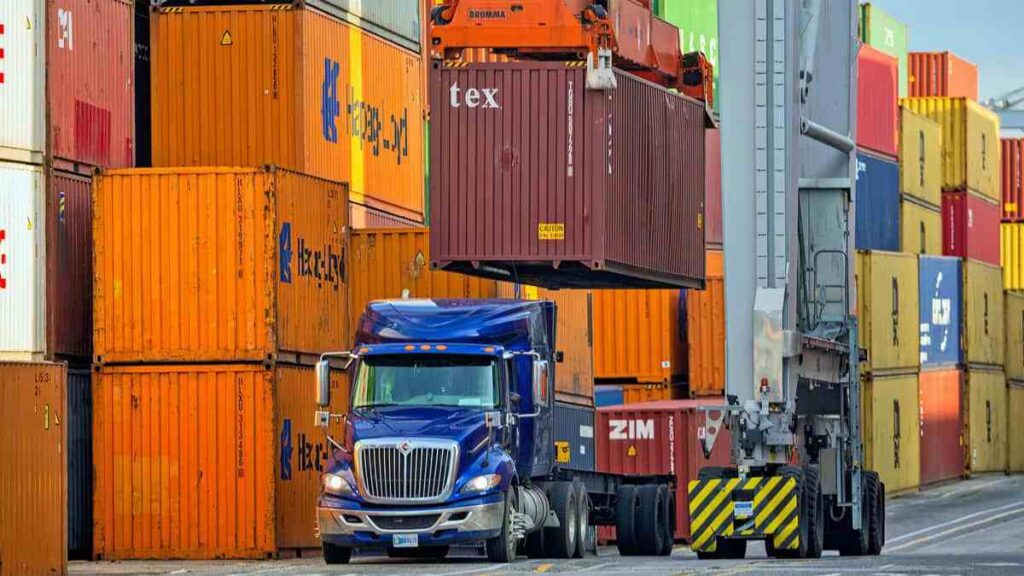- By TOP CHINA FREIGHT
- April 18, 2025
- Shipping
How to Handle Dangerous Goods and Shipping from China to Netherlands
When shipping goods internationally, especially from China to the Netherlands, handling dangerous goods can be a complicated process. Ensuring safety, compliance with regulations, and smooth import clearance is essential. In this post, we’ll guide you on handling dangerous goods, navigating import clearance for Netherlands shipping, and finding reliable delivery services for your China orders.
How to Handle Dangerous Goods for Netherlands Shipping
Handling dangerous goods involves complying with a range of international regulations. The Netherlands follows European Union rules that govern the classification, packaging, labeling, and documentation of dangerous goods. These goods include chemicals, flammable items, and other hazardous materials that pose risks during transportation.
Classification and Labeling
To begin with, proper classification is critical when dealing with dangerous goods. According to the UN classification system, dangerous goods must be identified by specific codes. Additionally, accurate labeling is necessary; each package should clearly display hazard symbols and warnings. This will help prevent accidents during transit.Packaging Requirements
Furthermore, dangerous goods must be packed in specific materials that comply with safety regulations. These materials prevent leaks and spills, ensuring the safety of the shipment and protecting individuals handling the goods during transportation.Documentation for Dangerous Goods
Moreover, a Dangerous Goods Declaration (DGD) is required for any hazardous material being shipped internationally. This declaration provides essential details about the goods being shipped, such as their type, quantity, and specific safety instructions. Without proper documentation, shipments are often delayed or even rejected.
Import Clearance Guide for Netherlands Shipping
When goods arrive in the Netherlands, import clearance is necessary to ensure compliance with local regulations. Import clearance involves several essential steps:
Customs Declaration
First, all goods entering the Netherlands must be declared at customs. Typically, the importer or a customs broker handles this process. The declaration includes key details such as the classification, value, and origin of the goods.Tariffs and Duties
Additionally, all goods entering the Netherlands are subject to customs duties and VAT. These charges depend on the type of goods and their value. Therefore, it’s important to ensure the correct classification of products to determine the applicable tariff.Required Documents for Clearance
To proceed with clearance, you’ll need several documents, such as a commercial invoice, packing list, Bill of Lading (B/L), and certificate of origin. Some goods may also require special permits, such as for food or medical products.
Netherlands Delivery Service for China Orders
Once your goods clear customs, the next step is delivery. A reliable delivery service is crucial to ensure timely and safe delivery. Several logistics companies offer efficient Netherlands delivery services for China orders. It’s important to select a service that offers:
- Tracked Shipping: This feature allows you to monitor your shipment throughout its journey and receive real-time updates.
- Flexible Delivery Options: Depending on your needs, you can choose between standard or expedited shipping.
- Local Delivery Networks: Trusted local partners with a strong network in the Netherlands can ensure faster and more efficient delivery.

PAA (People Also Ask)
1. How do I handle dangerous goods for Netherlands shipping?
Dangerous goods must be classified, labeled, and packed in accordance with international regulations. Proper documentation, such as the Dangerous Goods Declaration (DGD), is essential for compliance.
2. What is the import clearance process for shipments entering the Netherlands?
Import clearance involves customs declarations, payment of duties and VAT, and submitting necessary documents like the commercial invoice, packing list, and Bill of Lading.
3. How do I find reliable delivery services for China orders in the Netherlands?
Look for logistics companies offering tracked shipping, flexible delivery options, and strong local delivery networks in the Netherlands to ensure smooth delivery.
4. What documents do I need for customs clearance in the Netherlands?
You will need a commercial invoice, packing list, Bill of Lading (B/L), certificate of origin, and any specific permits required for the goods being imported.
Tags :
- China to Netherlands shipping guide
- Customs clearance Netherlands
- Dangerous goods documentation
- Dangerous goods shipping
- Delivery services Netherlands China orders
- Import clearance Netherlands shipping
- Netherlands delivery service
- Netherlands import duties
- Netherlands shipping import clearance
- Shipping from China to Netherlands
